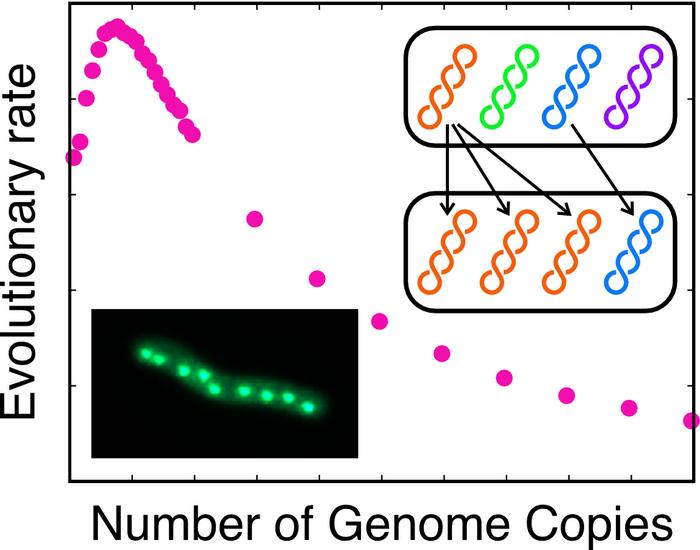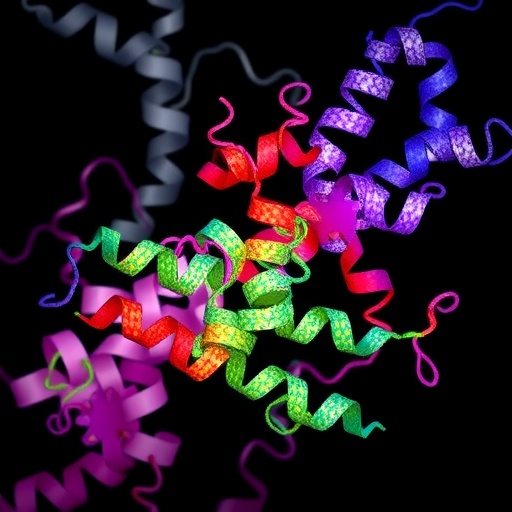Recent research has provided profound insights into the evolutionary dynamics of polyploid organisms. Polyploidy, which refers to the possession of more than two complete sets of chromosomes, is a phenomenon observed in many species, including plants and certain microorganisms. This remarkable genetic configuration presents a paradox: while having multiple genome copies can create genetic redundancy that promotes stability, it can also inhibit evolutionary adaptability. A team of researchers from the Earth-Life Science Institute (ELSI) at the Institute of Science Tokyo, led by Tetsuhiro Hatakeyama, has shed light on how environmental conditions influence the dual role of polyploidy in evolution.
This innovative study uses a combination of theoretical modeling and empirical observations to probe the effects of polyploidy on genetic variance and evolutionary trajectories. The researchers illustrate that polyploidy acts as both a hindrance and a catalyst for evolutionary development, contingent upon the environmental context in which an organism exists. Through this nuanced exploration, they identify fundamental aspects of how polyploid organisms adapt to their surroundings, offering a fresh perspective that challenges classical views of evolutionary biology.
Hatakeyama’s curiosity about polyploidy dates back to his early academic career, during which he engaged in extensive studies of cyanobacteria. This initial exploration laid the groundwork for his subsequent theoretical investigations into the evolutionary mechanisms shaped by increased genome copies. The interplay between stable environments, which favor gradual evolution, and extreme conditions, which require rapid adaptation, is crucial to understanding the evolution of polyploid organisms. Hatakeyama emphasizes, “In stable environments, increased genome copies tend to slow down evolutionary change. However, in more turbulent and extreme environments, polyploidy can spur rapid innovation.”
A compelling aspect of the research lies in its distinction between smooth and rugged fitness landscapes. Smooth landscapes accommodate gradual phenotypic changes, where the accumulation of beneficial mutations can enhance survival. Conversely, rugged landscapes necessitate substantial shifts in phenotype for organisms to thrive. The research suggests that polyploid organisms, due to their convoluted genetic makeup, often struggle in stable environments where nuanced gradual evolution is necessary. This reduced genetic variance results in the dilution of advantageous traits, diminishing the likelihood of beneficial mutations taking root.
Yet, this study uncovers that in rugged fitness landscapes, characterized by unpredictable and extreme environmental conditions, polyploid organisms excel. They are more likely to produce new traits rapidly, as the multiple genome copies increase their potential for significant genetic shifts. Dr. Ryudo Ohbayashi, a collaborator of Hatakeyama, reinforces this notion by stating, “In scenarios demanding substantial evolutionary changes, polyploidy opens the door for a plethora of new genetic possibilities, thus facilitating innovation.”
The implications of these findings extend beyond theoretical biology; they resonate with real-world applications in various fields such as microbial biotechnology, agriculture, and medicine. Many organisms in extreme environments—often polyploid—can serve as models for understanding how complex genetic architectures contribute to adaptation. The research elucidates why polyploidy can be particularly advantageous in harsh climates, highlighting its potential applications in genetic engineering and addressing challenges like drug resistance and cancer therapy.
Moving forward, the necessity for empirical validation of the theoretical constructs proposed in this study cannot be overlooked. Experimental studies designed to test these models will be critical in corroborating the theoretical predictions made by Hatakeyama and Ohbayashi. Future research endeavors may also delve into the exploration of mechanisms other than polyploidy that could drive evolutionary innovation. Hatakeyama aptly concludes, “Our research showcases the intricate relationship between theoretical physics and evolutionary biology, providing a deeper understanding of how genetic frameworks influence adaptability in various ecological niches.”
This groundbreaking research not only enriches our understanding of the role of polyploidy in evolution but also sets the stage for future interdisciplinary explorations linking evolutionary mechanisms with practical applications in science and medicine. The interplay between genetic architecture and evolutionary success remains a vibrant field of inquiry, inviting researchers to further investigate how these complex systems operate in a changing world. As we continue to unravel the intricate web of life’s evolutionary threads, studies like this illuminate the path forward, bridging the gap between theory and application in our quest to understand the fundamental processes that shape life on Earth today.
Subject of Research: Polyploidy and its role in evolution
Article Title: Evolutionary Innovation by Polyploidy
News Publication Date: December 23, 2024
Web References:
References:
Image Credits: Reproduced from Hatakeyama and Ohbayashi PRX life
Keywords: Polyploidy, evolution, genetic variance, fitness landscapes, biodiversity, environmental adaptation, microorganisms, evolutionary biology.
Tags: Environmental ContextEvolutionary AdaptationEvolutionary InnovationFitness LandscapesGenetic RedundancyGenetic SkewnessGenetic VarianceGenome DuplicationMicrobial BiotechnologyPolyploidyRugged LandscapesTheoretical Modeling





